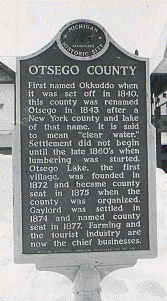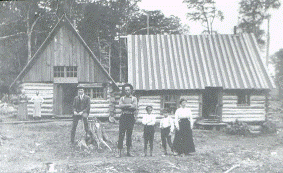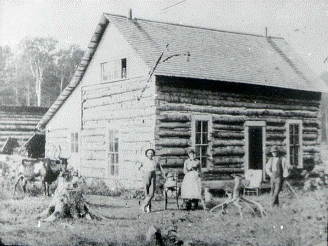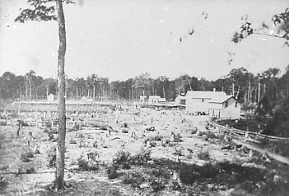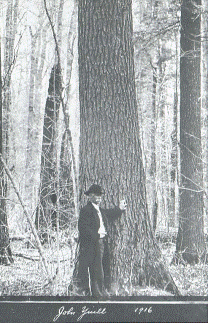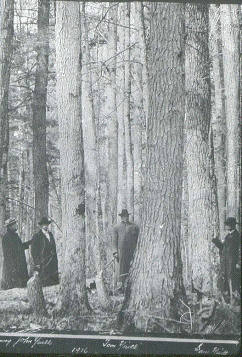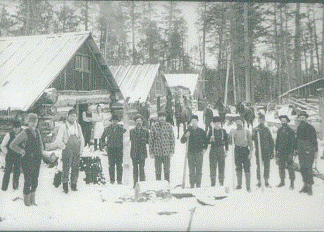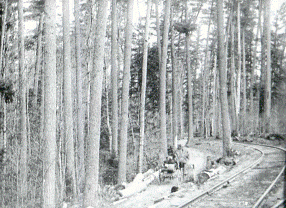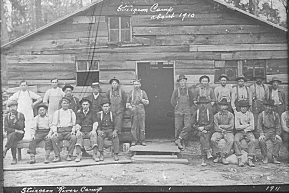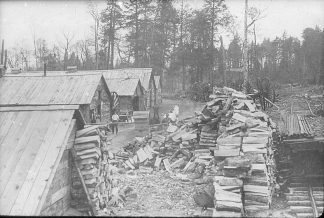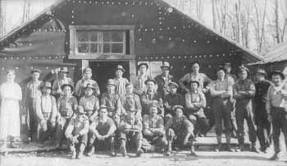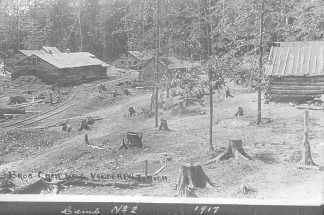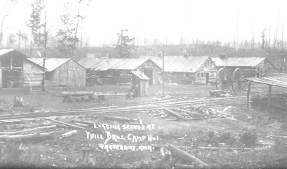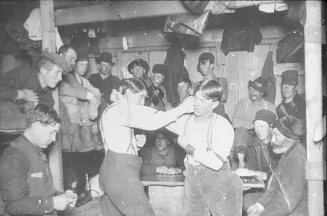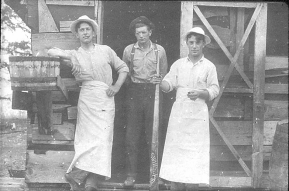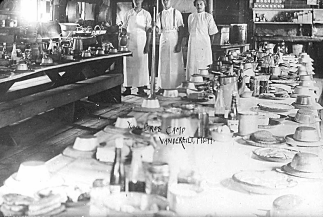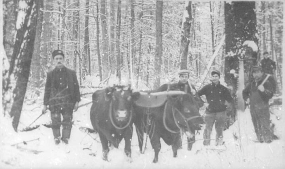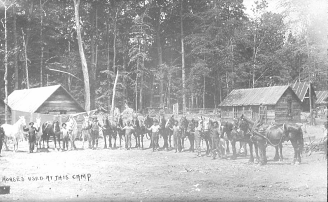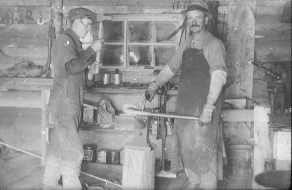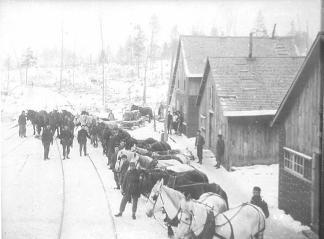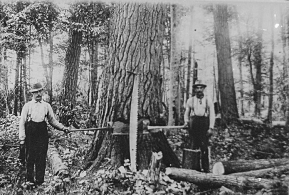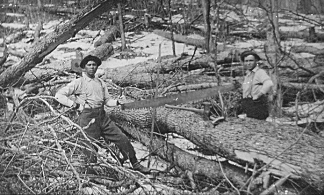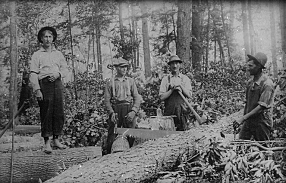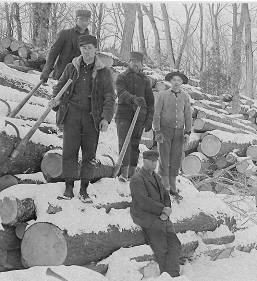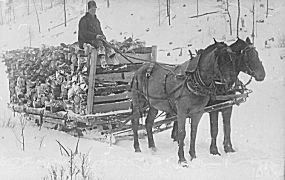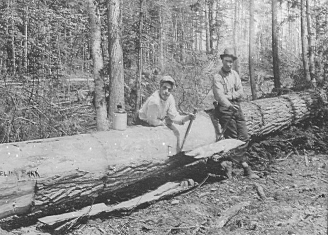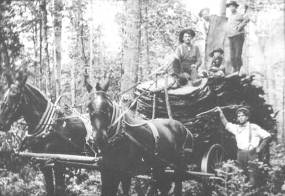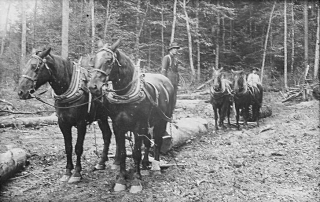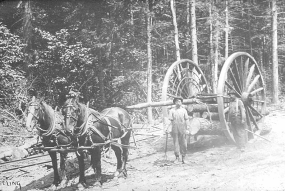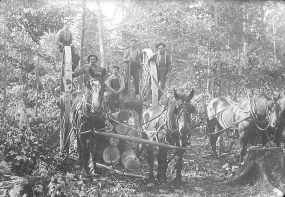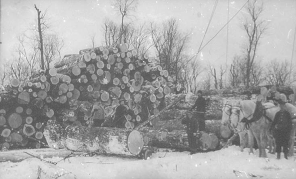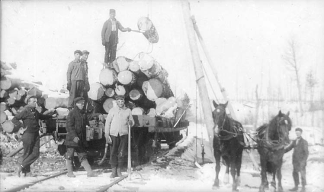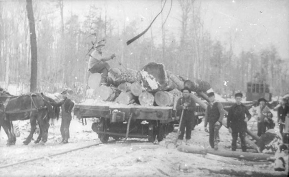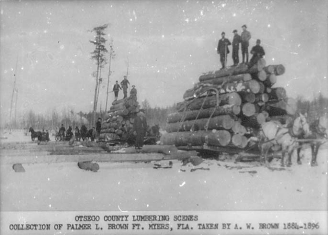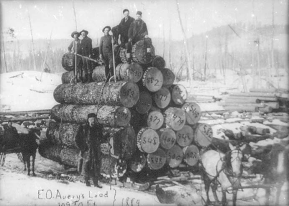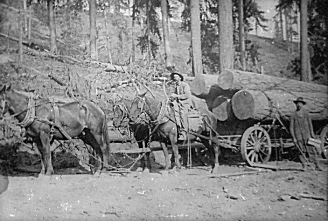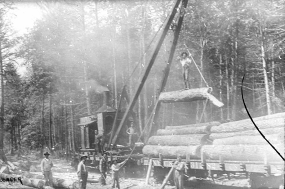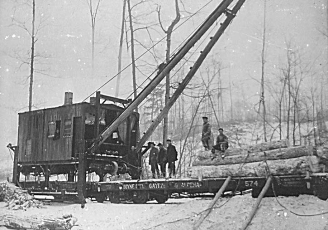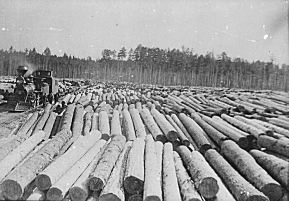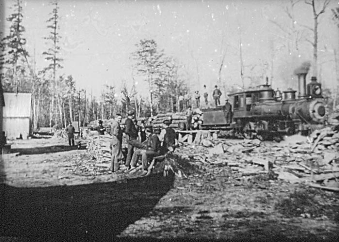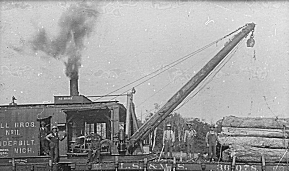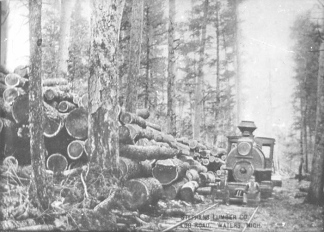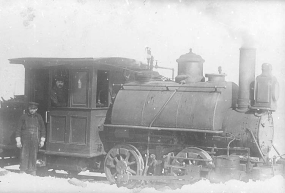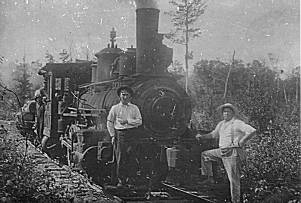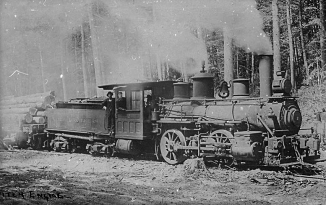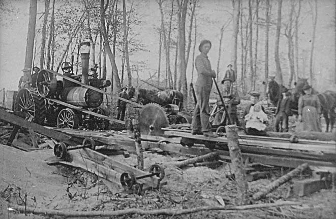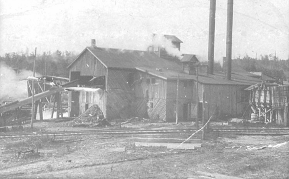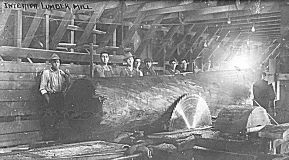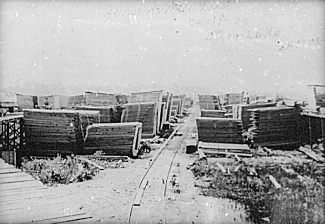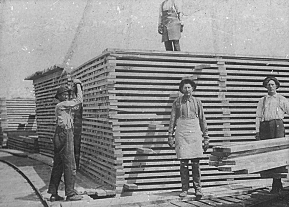|
Early
The Gaylord Camera Club produced the following slide presentation in 1972. Before the spring of 1868, In April 1868, A.A. Dwight - a pioneer
lumberman from Almont in Another attempt was made in the spring
of 1869 when Charles S. Brink with fourteen men from Crops were planted on the cleared land
to provide much needed food. Early frost did considerable damage.
The difficulty of transporting needed supplies from the Slides 3 - 68 |
|
|
1. This
historic marker, located in the front of the |
|
|
|
2. Soon after the area was opened for logging and the railroad made its way into the wilderness, the early settlers - or pioneers - arrived. They rolled up their sleeves, went to work, and made for themselves crude but livable log homes and barns. |
|
3. It was a hard, lonely life full of hardships and difficulties that had to be endured and overcome. |
|
|
|
4. It was typical of the courage and determination that was shown by most pioneers and that enabled this county to grow and develop. |
|
5. In the beginning, the lumbermen were interested only in the huge white pine of which there seemed to be an abundant supply. |
|
|
|
6. These types of trees - maple, birch, beech, hemlock, spruce - were not cut until much later when there was a profitable market for them. |
|
7. Logging or lumbering played such an important role in the economic development of the area for a period of more than 50 years. Here are some photographs of the many phases of that industry during the period from the 1880s to the 1930s. |
|
|
|
8. Railroads were needed to haul the lumber out of the forest to the sawmills. |
|
9. In order to harvest a timber crop, a base of operation had to be established. This was called a logging or lumber camp. |
|
|
|
10. It could be a small operation employing only a few, or it could be a large one employing hundreds. |
|
11. Naturally, the first camps were made from trees which were so readily available. Later, however, when portable and permanent sawmills were set up, the material used was rough sawn lumber. |
|
|
|
12. These later buildings were usually covered with tar paper to keep out the wind, rain, and snow. |
|
13. Over
the years, there were many different lumber camps in |
|
|
|
|
|
|
14. Each camp was more or less a self-sufficient unit capable of taking care of all its immediate needs. The men employed to work in them were housed in a structure called the Bunk House. Here they slept in bunks with mattresses made from tree boughs, hay or straw. |
|
15. They also took care of their personal needs and entertained themselves in whatever way they could. |
|
|
|
16. A very important part of any lumber camp was the Cook House. Here is where all the food necessary to feed the work crew was prepared in huge wood-burning stoves by the Cook - Cookie - and Bull Cook. |
|
17. About two-thirds of the Cook House contained long tables and benches from which the crew ate their warm, nourishing, and wholesome meals. Feeding the men was very important. If they didnít like the food, it was a simple matter for them to pack their few belongings, collect their pay, and walk to another camp where perhaps the eating was a little more to their liking. |
|
|
|
18. Horses and occasionally oxen were a very important part of any logging operation. |
|
19. In order to house and properly care for the animals, barns had to be built. |
|
|
|
20. The blacksmith shop kept the horses properly shod and the equipment in good repair. The blacksmith and his helper were skilled men capable of doing whatever needed to be done. |
|
21. There were other buildings at the camp such as the foreman's office and living quarters, the camp store, and the supply house. |
|
|
|
22. Cutting the huge trees required skill and the proper tools - a two man crosscut saw, a sharp double bit ax, and a cant hook or peavy. |
|
23. A good woodsman - or so called lumberjack - could fell a tree exactly where he wanted it, where it would do the least possible damage to other trees. |
|
|
|
24. Once the tree was on the ground, the branches were chopped away and the trunk was cut into lengths that would yield the greatest number of board feet. |
|
25. The peavey or cant hook enabled the cutters to move or manipulate the heavy log if it became necessary. |
|
|
|
26. In later years, when there was a profitable demand for cordwood, the unused tree tops were cut up and sold for that purpose. Cordwood was the fuel used for cooking and heating the home. |
|
27. For many years the shoe or leather industry used bark from the common hemlock tree to tan or color its leather. Here you see the woodsmen peeling the bark. |
|
|
|
28. Shown here is a team hauling the bark to a place where it can be decked and shipped to the tannery. |
|
29. The logs, once cut into their proper length, were dragged or skidded by horses or oxen to a place where they could be decked or loaded and taken to the mill. |
|
|
|
30. A very common site at any logging operation was the use of the Big Wheels, some of which, they say, were manufactured in Gaylord. |
|
31. The wheels were high enough and so designed that a team of horses could lift and haul several logs out of the rough terrain. |
|
|
|
32. They were used primarily during the time when there was no snow on the ground. |
|
33. An
interesting sidelight is that the big wheels, which were originally
manufactured in |
|
|
|
34. The logs once cut and brought to the loading area were usually decked in large piles. |
|
35. Later on, through the use of a simple log jammer or loader, they would be loaded on sleighs, wagons, or railroad cars for transport to the mill. |
|
|
|
36. Sometimes a team of horses plus a couple of skid poles were all that was necessary to load a sleigh, wagon, or flatcar. |
|
37. Before the widespread use of the logging railroad, most logs were either floated down river in the spring to the mill or hauled on sleighs during the winter usually over iced logging roads. |
|
|
|
38. You'll have to admit that these pictures show some pretty fantastic loads. |
|
|
|
|
39. Hauling by wagon during the summer was difficult, not at all practical, and not very often used. |
|
|
|
40. In the later years the logging railroad was the principal method of moving logs to the mill. With them came the steam loader which was faster and more efficient than the team manipulated jammer. |
|
41. If
one knows where to look, he can find evidence today of the many railroad
logging operations all over |
|
|
|
|
|
|
|
|
|
|
|
|
42. What was the logging railroad like? Take a look at some of the locomotives that were used. |
|
|
|
|
|
|
|
43. The
ultimate destination of all logs harvested from the forest was the saw
mill, either a portable one shown here or a permanent one shown below
located in the |
|
|
|
44. The
lumber produced by these mills played a very important part in the
building industry or |
|
45. Saw mills were usually located near a body of water. The water was used for a mill pond where the logs were dumped and sorted before being sent up the conveyor chain and into the mill. |
|
|
|
46. In the mill the log is placed on a moveable carriage that took it past a large rapidly rotating circular saw that cut it into rough lumber of varying widths and thickness. |
|
47. Once cut up into lumber it was loaded on tram cars and moved out into the huge lumber yard. |
|
|
|
48. Here it was systematically piled so that nature would thoroughly dry it. Later, when the lumber was properly seasoned, it was loaded again and taken to another mill where it was made into a variety of finished lumber. |
|
49. Plaster in the early home required the use of a wood lath. Here you see the mill employees piling bundles of them. |
|
|
|
50. A by-product of any saw mill was slab wood. These were the slabs and edgings cut from the log. They were usually cut in to short lengths and delivered to the local people for use in their cook stoves, space heaters, and fireplaces. Here we see the slab wagon at one of the mills. |
